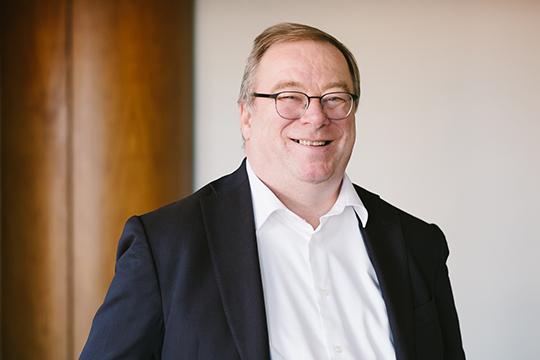Convivium: In a recent symposium hosted by the Centre for Research on Religion at McGill University in Montreal, you made the argument that Angus Reid polling data shows young people are much more engaged in faith than we think. What does the polling data say in general terms?
Ray Pennings: I think the best place to start is with society as a whole. We have two groups on either end, one of which is very committed to faith, the believers category of approximately 20 per cent, and those who are unbelievers who tend to be hostile in various ways; they think faith's a bad thing. You've got almost a perfect bell curve, 20 per cent (public) believers, 30 per cent who live their faith privately, 30 per cent who are sceptical, and then 20 per cent non-believers. The public narrative regarding society as a whole is that you’ve got this 20 per cent of religious people, but the people in the middle are more like the non-believers than they are like believers. That’s said to be particularly true regarding the next generation, which is perceived to be less religious than society as a whole. I want to suggest the data shows the narrative of faith applies more to the middle group than does the narrative of unbelief. It’s true regarding society as a whole, but also for young people in almost equal proportions.
Convivium: What factors did the polling take into account?
Ray Pennings: Everything from prayer to belief to engagement. What’s interesting is that with young people, when we take a look at what were the factors that shaped their religion, they want to talk about faith with their families. In fact, they're doing a little more of that than their parents were. But family has declined, church institutions have declined, so our spiritual journeys are very personal journeys. We're having to figure it out on our own. There's a loss of the role of the institutions of faith and young people in particular are feeling that.
That said, the narrative of secularism, the general story of the decline of faith and the longer we go the less faith we're going to see, isn’t a valid one, I don’t think. The narrative is really one of decline of influence of faith institutions, and a different sort of spiritual formation that is happening among young people. It’s nuanced by immigration, by stage of life, by a number of other factors that make the story much more complicated than it's usually made out to be.
Convivium: Some of the numbers you cite, and simple observation of the changing world around us, make a plausible case that it’s actually the secular moment that’s passing. Would you agree with that?
Ray Pennings: I think there is a thirst for relationship, a thirst for authenticity, expressed in this desire of faith for young people. We're in the midst of the transformation from what Charles Taylor would call a Secular Two to a Secular Three level of understanding. We’re going from a secularism in which the public square is neutral, and religion is private, to a secularism that is its own progressive ideology. I think young people are probably a little ahead of society as a whole in calling that secular shift into question. Some are finding it adequate and joining it as unbelievers. There’s no doubt about that. An equal number are saying, “That doesn't do it, that doesn't cut it.” It’s expressed in desire for meaning or purpose. That has implications for relationships. In a previous generation, the argument was freedom versus a set of rules. Now, it's about authenticity and meaning and saying, "Wait a minute, this absolute freedom, this liberty to do what we want, isn't quite as fulfilling as was made out. Let's actually take a look at the consequences: this doesn't work.”
C: In terms of the youth data, were there specific numbers that jumped out at you?
RP: The fact that they pray and that more young people believe in Hell than do in the population as a whole. This is not the stark narrative of young people rejecting religion that the narrative is usually made out to be.
C: But do we know what they mean when they say, "We believe in hell"?
RP: No. The nature of a poll doesn't show that. For example, sin is not a concept that's deeply grasped. But what comes through very clearly is it’s not a rejection of religion.
.png)
C: What is it an embrace of, then, if it's not a rejection of religion? Is it an embrace of a good feeling? Of a need for order?
RP: I think the question they’re asking is what it means to love God and to love neighbour. Those are real questions. Young people are saying to the pretence that you can live life and build a society without addressing those questions: "That doesn't work." Now, many of these are children of Boomers and even of Gen Xers who did not take them to church. So, unlike a previous generation, they haven't been given the answers the churches give. They have not been shaped institutionally so they're left on their own. They're searching. They are trying to find community. They're trying to find meaning. Some of them are having a hard time finding it.
C: It sounds like an evocation, then, of what is sometimes called our religious sense. It's almost built into our human DNA to have that sense of questing for something outside ourselves.
RP: They're seeing it not just in religion, they're also seeing it in the various institutions of society. They're very concerned about tolerance, and refugees, and immigrants. They are very concerned about social justice, and concerned about their neighbours, so they get involved in soup kitchen other charitable work. Lo and behold, when they actually get involved, they find the people who are most involved are people of faith – surprise, surprise. The people they are alongside are motivated by their faith. Although they are not going to the places of worship, they are running into people of faith, and that's no surprise statistically. It's quite clear that people of faith do a disproportionate amount of that work. So young people are running into that and seeing it as an expression of faith. They're curious, even though they haven't quite not connected the dots yet.
C: Cardus’ education program director Beth Green uses the metaphor of the stool with three necessary legs for the institutions that cultivate faith: church, family, school. So, schooling is a critical component. Our earlier polling data from Angus Reid showed that in the context of home, once faith is presented in a coherent way through family, it carries forward in some way for life. That leaves the churches. How do they need to understand this data? What do they need to develop?
RP: Well, I think a lot of institutions, and faith institutions in particular, work from the assumption that they're just dealing with the children of people who are already their members. They have shaped their language, they have shaped their programs, with that sort of assumption. Many young people who are not part of an institution find the cultural assumptions and everything around them very off putting, difficult to understand. The barrier to entry becomes quite high. There's language they don't understand. There are internal cultures they don't understand. The real challenge for faith institutions is to reach out, especially to young people, in a way that lowers the barrier of engagement by challenging (institutional) assumptions about what those young people know.
For better or worse, this is an activity driven generation so I think in the midst of doing these activities, young people want to get involved. They want to be concerned about their neighbour. Finding ways to engage them in activities and, in the context of those activities, providing coherence and a framework that answers the “why” questions is very important.
.png)
C: One of the barriers, it seems to me, is a long-standing undermining of the whole connection between faith and commitment. By definition, to have a faith means that you actually commit to something very particular. But in our refundable society, if you don’t like something, you return it and get something else, something new.
RP: I think that is the crucial piece. It’s simply not sustainable to say we should abandon the content of faith, let’s just go help our neighbours and everything will be fine. It misunderstands faith. People of faith don't help their refugees because they are all into refugees. They help because of the content of the faith. It's a logical consequence. I exhale because I inhale. If I'm breathing, both are a part. There's content and there's activity, and they are connected. You can't have one without the other. When you're dealing with children who are acculturated into religious settings from their youngest years, brought to church, or synagogue, or mosque by their parents, it's all a part of a way of life. Then the activity sort of proceeds. Well, we're dealing with a generation that didn't have that background, they don't have that culture. It may very well be the activities are the point of contact in which people are introduced to communities of faith. But if you think you can just have them involved in the activities, and don't bring them along in terms of a catechesis of some sort –what it is that you really believe? – you're not going to keep them.
Young people are looking for that authenticity. They're looking for the places to talk about it honestly and openly.
.png)
C: We used to call this the disposable society. Now it's the swipe left, swipe right society. If you don't like something, swipe right. If you like it, swipe left. When you teach a generation that the world is like that, it becomes very difficult to teach them there actually are things that endure.
RP: It doesn't matter which faith generation you're talking about, there is a certain linear coherence. When you don't follow that through, religion just becomes people who wear funny hats, eat funny foods, and use a particular form of jargon in their settings. That, to the outsider, seems incoherent. Young people often are coming into contact with religion and we're not doing a good job of providing the framework. of explaining why this all hangs together, what the meaning is. What the data suggests is there's an appetite out there, especially among young people, who are trying on their own, asking existential questions, praying. I think it's a challenge in terms of putting ourselves in a way to answer and to provide meaning and community for them.
People understand that there is a connection between belief and behaviour. You might come to faith through activities, but faith isn't just a set of activities. It’s part of an identity, who you are, how you understand the world.
C: What does Cardus do now with this this data now? You've put it out there, you've spoken to this. How is it carried forward?
RP: In a pluralistic society, in which there is no one cohesive narrative that holds us together, it’s important to bring data into the public square and not allow easy and false narratives to continue to hold in the public. The false narrative that Canadians are secular by nature simply does not hold up. The irony is, as we bring in several hundred thousand immigrants a year, those newcomers have a higher percentage of belief along the way, and communities of faith also have higher fertility rates. Demographics alone suggest that society is in the midst of changing its direction. As a think tank dedicated to the public square, to creating conversation and space for how institutions carry out their mission, it behooves us to make sure that we don’t just talk about the institutions on each side of the street, but the street itself so that there's good access to those institutions, that the sidewalks are swept and the snow is removed, metaphorically speaking.
Convivium means living together. We welcome your voice to the conversation. Do you know someone who would enjoy this article? Send it to them now. Do you have a response to something we've published? Let us know!




.png)
.png)
.png)

